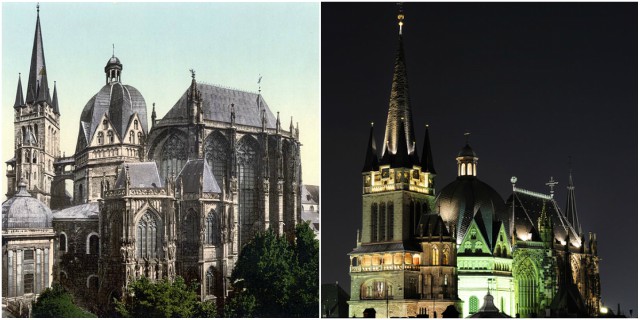Aachen Cathedral is one of the oldest Roman Catholic churches in northern Europe. Its construction was ordered by Charles the Great, Charlemagne, also known as the “Father of Europe”.
His intention was to make a church which would represent the entire image of Heavenly Jerusalem, symbolizing the contact between the Earthly and Heavenly. Founded in 796 AD as Palatine Chapel, this cathedral is one of the greatest examples of church architecture in the world.
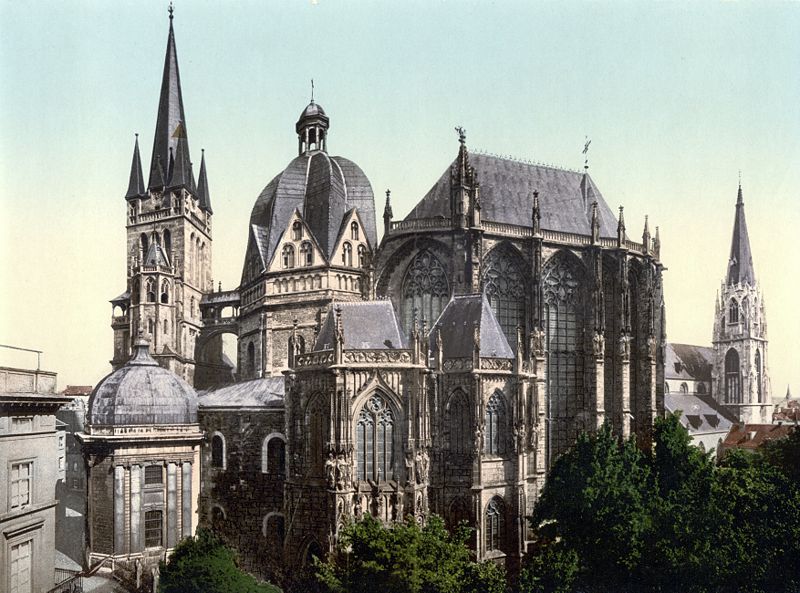
The chapel is the oldest part of Aachen Cathedral. The Cathedral has a unique design which brings together forms from the eastern and western parts of the Holy Roman Empire. Its construction took almost ten years.
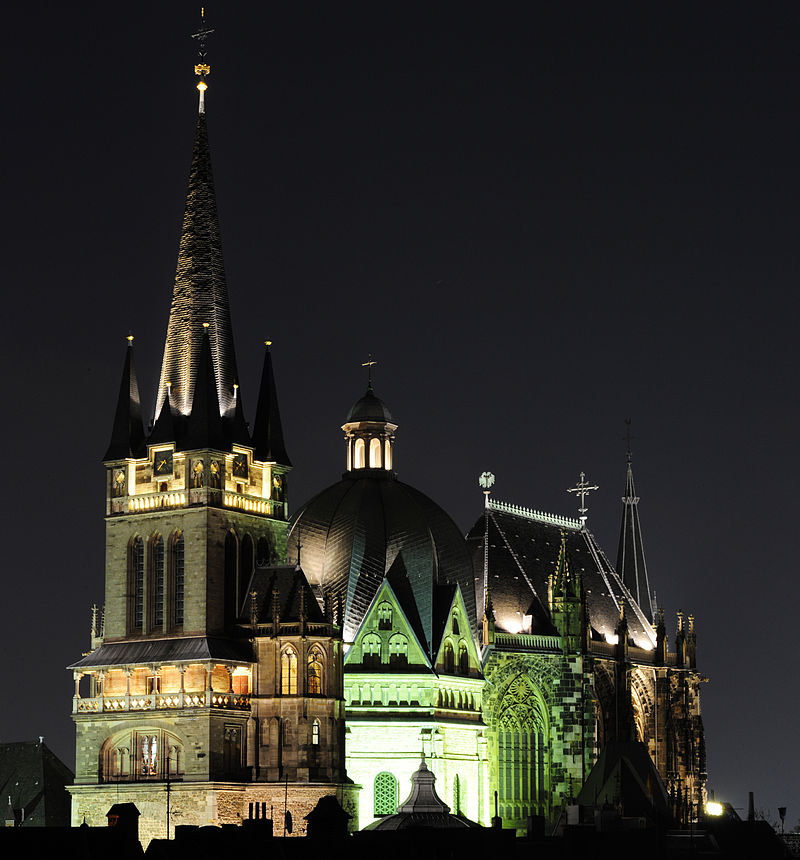
In 814 AD, Charlemagne died and was buried in the chapel. The chapel was heavily damaged by the Vikings in 881. Since its restoration in 983, the chapel served as a coronation church for almost 600 years.
Twelve German queens and thirty German kings have been crowned in a coronation ceremony in the chapel. The Cathedral became an important pilgrimage site after the canonization of Charlemagne in 1165.
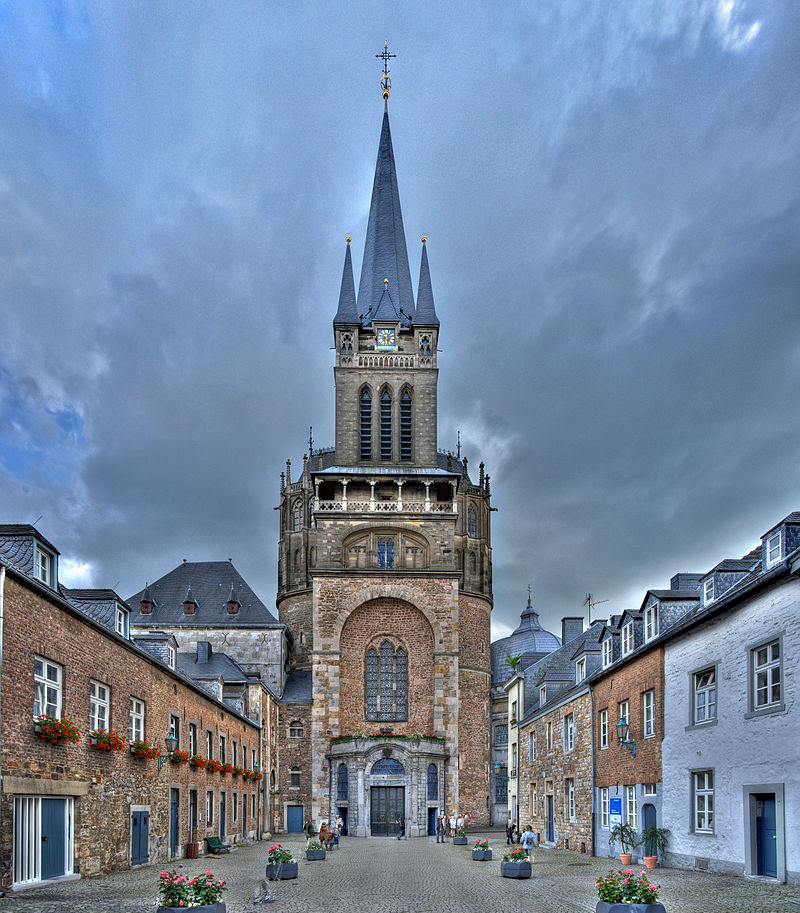
In the interior of the Aachen Cathedral, there are Byzantine mosaics, Gothic decorations, Carolingian elements, and an unusual amount of gold. The Byzantine mosaics in the vault date from the late 19th and early 20th century. There are many marvelous works of art such as the 100-foot-high dome placed at the center of the octagon. The octagon has two levels; the lower level being surrounded by small chapels and arcades; and on the second level, there are eight arches with ancient pillars which serve as a decoration.
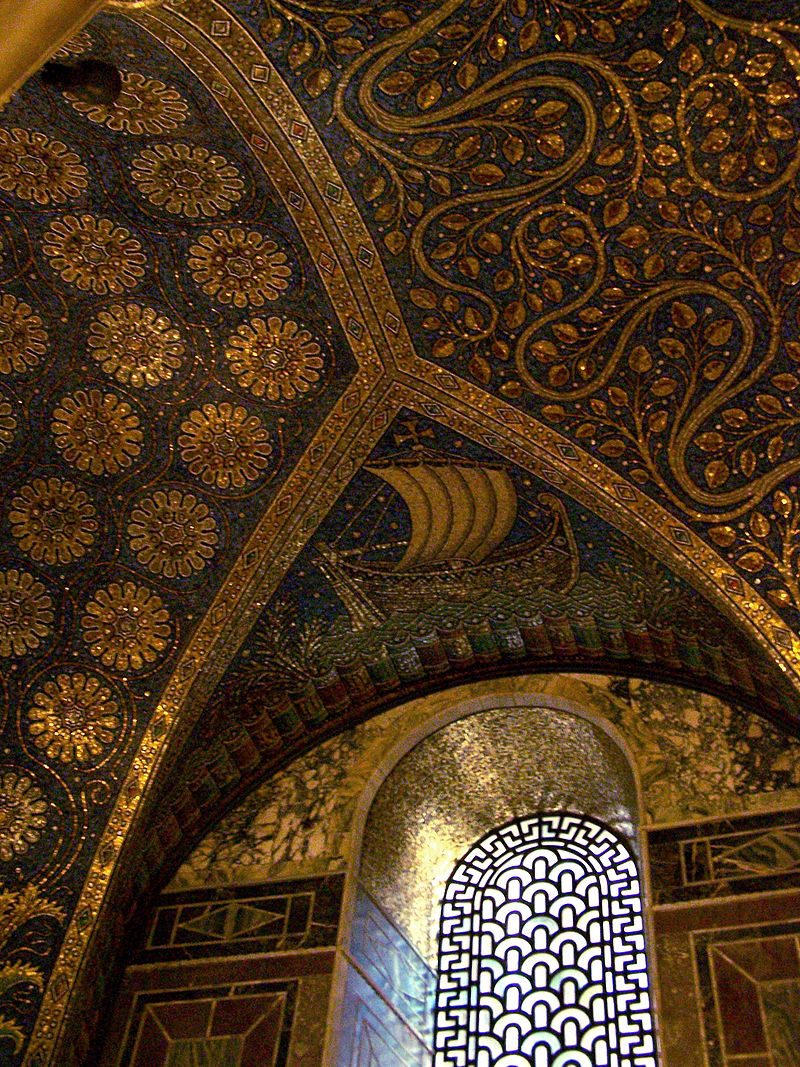
Also, on the second level of the Cathedral is The Charlemagne coronation throne. The throne is very small and simple, with no decorations. Bronze clasps hold together the four marble slabs. According to scientific researchers, the marble came from floor stones brought from the Church of the Holy Sepulchre in Jerusalem.
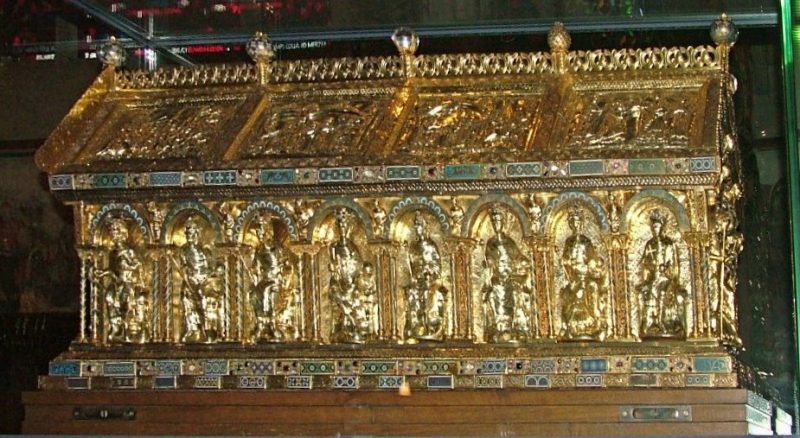
Other valuable pieces of art are the antique columns, capitals, and bronze grills made in Carolingian workshops. And there are also many royal donations in the cathedral, one of them is Pala d’Oro, the golden altar which was donated by Emperor Otto III. Beyond the golden altar, there is another spectacular sight – the Gothic Choir.
This choir dates from the 1950s (the original was destroyed during World War II). It consists of 13 colorful windows which rise 100 feet high. Another donation is the chandelier which was donated by Frederick Barbarossa.
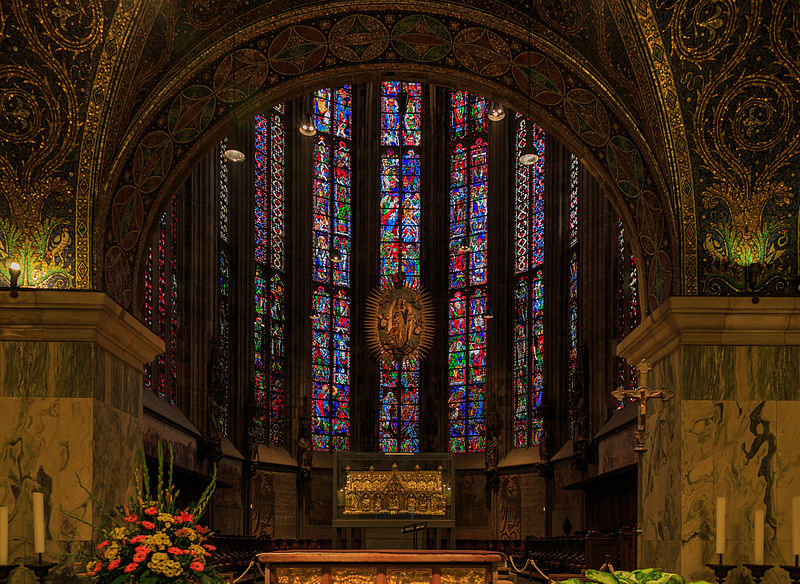
The four great Aachen relics; Christ’s swaddling clothes; Christ’s loincloth; Virgin Mary’s cloak; and St. John the Baptist’s beheading cloth, are kept in the Shrine of Virgin Mary. During the Pilgrimages, the relics are shown to the faithful.
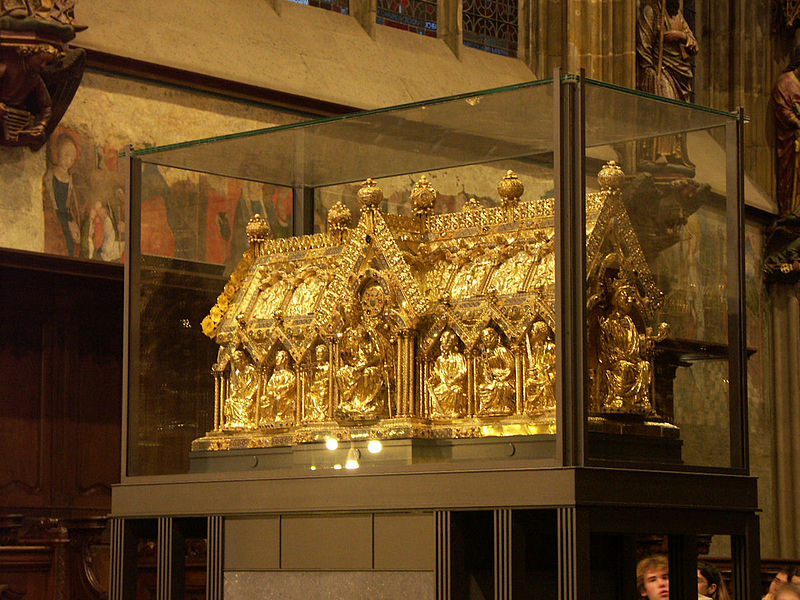
Other precious objects and exquisite relics from the history of the Aachen Cathedral can be found in the Cathedral Treasury, which is one of the finest in Europe.
Being the oldest cathedral in Northern Europe, and one of the most historically significant places in Germany, Aachen Cathedral draws the attention of many visitors. The unchanged form and design, its use and function as church and pilgrimage site, has made the Cathedral part of the UNESCO World Heritage List.
